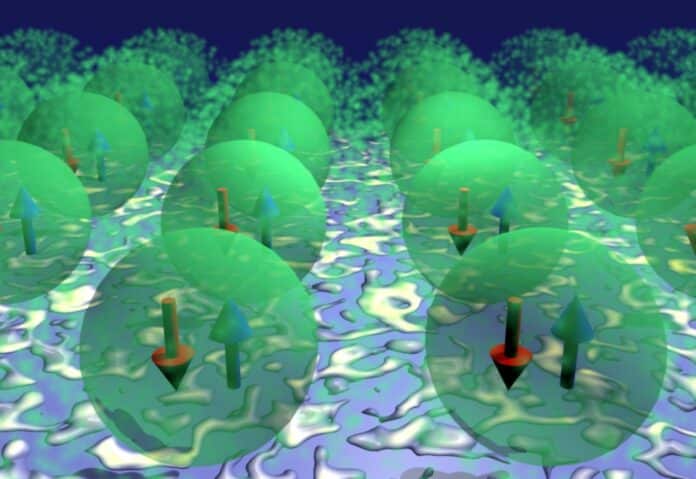Quantum magnets provide a powerful platform to explore complex quantum many-body phenomena. One example is triplon excitations, exotic many-body modes emerging from propagating singlet-triplet transitions.
Triplons are tricky little things that are difficult to observe. Even then, experiments are typically performed on macroscopic materials, where measurements are presented as an average across the entire sample.
That’s where designer quantum materials offer a unique advantage: They allow scientists to create phenomena not found in natural compounds, ultimately realizing exotic quantum excitations.
In a new study, a team from Aalto University and the University of Jyväskylä engineered a minimal quantum magnet from organic molecules. It demonstrated the emergence of dispersive triplon modes in one- and two-dimensional assemblies probed with scanning tunneling microscopy and spectroscopy.
The team used small organic molecules to create an artificial quantum material with unusual magnetic properties. Two border electrons are present in each of the cobalt-phthalocyanine molecules employed in the experiment.
Academy Research Fellow Robert Drost, the first author of a paper, said, “Using very simple molecular building blocks, we can engineer and probe this complex quantum magnet in a way that has never been done before, revealing phenomena not found in its independent parts.”
“While magnetic excitations in isolated atoms have long been observed using scanning tunneling spectroscopy, it has never been accomplished with propagating triplons.”
“We use these molecules to bundle electrons together; we pack them into a tight space and force them to interact. Looking into such a molecule from the outside, we will see the joint physics of both electrons. Because our fundamental building block now contains two electrons rather than one, we see a very different kind of physics.”
The group first observed magnetic excitations in cobalt-phthalocyanine molecules and then in bigger structures like molecular chains and islands. Scientists want to comprehend emergent behavior in quantum materials by starting with the extremely simple and moving toward increasing complexity. The team’s ability to show that the singlet-triplet excitations of its building blocks may travel through molecular networks as unusual magnetic quasiparticles known as triplons allowed them to publish their paper.
Scientists showed they can create an exotic quantum magnetic excitation in an artificial material. This strategy shows that we can rationally design material platforms that open up new possibilities in quantum technologies.
To create additional exotic magnetic excitations and ordering in quantum materials, the team intends to broaden their strategy to include more sophisticated building components. The intricate physics of correlated electron systems can be better understood through rational design from basic building blocks, creating new bases for designer quantum materials.
Journal Reference:
- Robert Drost, Shawulienu Kezilebieke, Jose L. Lado, and Peter Liljeroth. Real-Space Imaging of Triplon Excitations in Engineered Quantum Magnets. Physical Review Letters. DOI: 10.1103/PhysRevLett.131.086701
